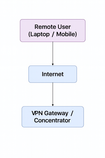IS-IS Routing Protocol: Design Principles for Scalable Enterprise Networks
- The Itvue Team
- Aug 20
- 2 min read
Author Ermias Teffera
At ITVue Networks, designing resilient and scalable enterprise networks requires efficient routing protocols. IS-IS (Intermediate System to Intermediate System) is a link-state routing protocol widely used in large service provider and enterprise networks due to its scalability, fast convergence, and hierarchical design capabilities. In this blog, we’ll explore IS-IS design principles, area hierarchy, best practices, and provide Cisco examples with diagrams.
What is IS-IS?
IS-IS is a link-state interior gateway protocol (IGP) used to determine the best path within an autonomous system. Key features:
Fast convergence with link-state updates
Hierarchical design with Level 1 (intra-area) and Level 2 (inter-area) routing
Uses CLNS addresses (NSAP) but can also carry IPv4/IPv6 via integrated IS-IS
Loop-free routing and efficient path selection
IS-IS Hierarchical Design
IS-IS scales networks using a two-level hierarchy:
Level 1 (L1) Routers
Route within a single area
Similar to OSPF non-backbone areas
Level 2 (L2) Routers
Connects areas (backbone)
Similar to OSPF Area 0 backbone
Level 1-2 Routers
Participate in both intra-area and inter-area routing
Typically distribution routers connecting access areas to backbone
IS-IS Design Principles
1. Area Planning
Assign small areas to minimize LSP flooding and CPU load
Maintain level separation: L1 routers only know about intra-area routes
L2 routers carry inter-area routes to connect areas efficiently
2. Metric Calculation
IS-IS uses cost metrics similar to OSPF
Interface cost = configurable value based on link bandwidth
Supports equal-cost multipath (ECMP) for traffic balancing
3. Route Summarization
Summarize routes at L1/L2 boundary routers
Reduces size of routing tables in backbone L2 routers
4. Redundancy and High Availability
Use multiple L2 routers in the backbone for redundancy
Combine with EtherChannel or LACP to aggregate uplinks from distribution routers
Use adjacency timers for fast convergence
IS-IS Network Diagram

L1 routers at access layer
L1-2 routers at distribution layer connecting to L2 backbone
Supports hierarchical scaling and efficient LSP propagation
Cisco IS-IS Configuration Example


net is the NSAP address (can be automatically generated)
is-type level-1-2 allows router to participate in both intra-area and inter-area routing
Best Practices for IS-IS
Use Level 1 and Level 2 separation to reduce flooding
Summarize routes at boundaries to minimize table size
Enable ECMP for load balancing across multiple L2 paths
Monitor adjacencies with show isis neighbor and route tables with show isis route
Combine with EtherChannel for aggregated uplinks between distribution and core
Real-World Example
In a large campus or service provider network:
Each building has L1 access routers connecting client devices
Distribution routers are L1-2 and connect to the backbone L2 routers
L2 backbone routers provide high-speed inter-area routing
EtherChannel uplinks and ECMP across L2 routers ensure bandwidth optimization, redundancy, and minimal downtime
Conclusion
IS-IS provides a highly scalable and loop-free routing environment for large enterprise and service provider networks. By implementing hierarchical L1/L2 design, route summarization, and link aggregation, ITVue Networks ensures clients’ networks are robust, efficient, and ready for growth.










Comments